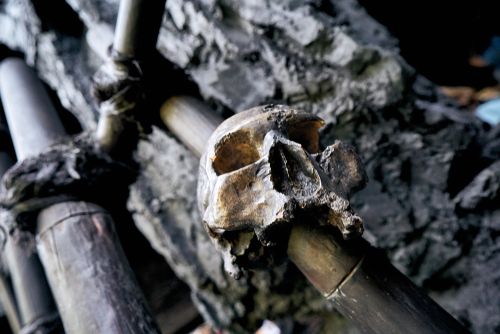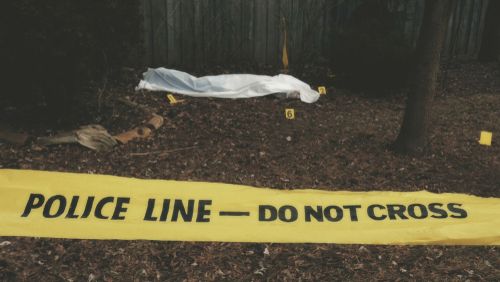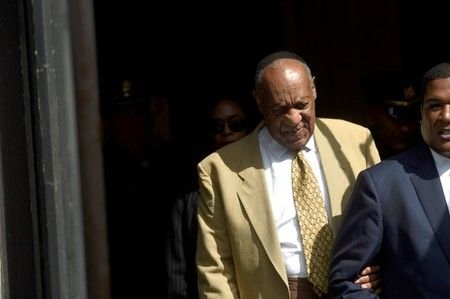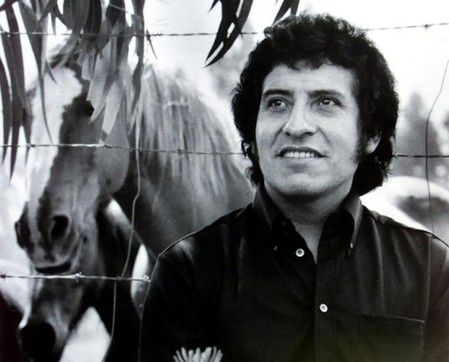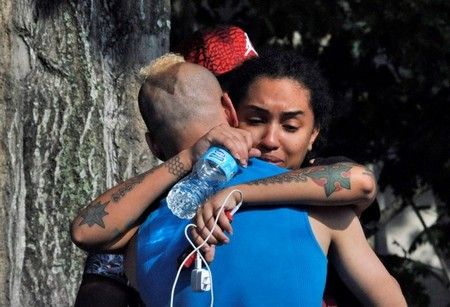Advertisement
Art Imitating Life: Horror Movies Based on Real Events Part Three

Congratulations on being brave enough to return for part three of this short series! If you have been keeping up, you will know that the movies in this article will have been written about or inspired by actual events from history. One of the great things about horror movies is that the killer is trapped on the screen and can’t hurt us, but what happens when the danger is next door?
The Hills Have Eyes
A clan of inbred cannibals hunts down travelers and terrifies a family by taking them down individually.
This movie is special on this list as the film is technically based more on a story rather than an actual family (as far as history can tell).
Looking deeper into the inspiration of this movie, there is information about a group of Scottish cave cannibals called the Sawney Bean Clan. It is unknown if this was a real family or just a story because the tale of this crazy family came around a time when England looked at Scots as second-rate citizens. Sawney was a popular derogatory name the English had for Scots at one point in time (similar to calling a random Irish man Paddy).
Alexander “Sawney” Bean was a 16th-century shady Scottsman. He was a leather maker by trade but was lazy and didn’t like working to make an honest living. His wife, Black Agnes Douglas, was accused of practicing witchcraft. The odd pair left their hometown for unknown reasons to make a home in an intricate cave system that was in the countryside and next to the sea. The cave, which was Bennane Cave by Ballantrae in Ayrshire, was a perfect place for their later crimes as it was well hidden, isolated, and usually flooded with water during high tide. There Sawney and Black Agnes lived for the next twenty-five years.
During their time living in isolation, Sawney and Agnes had fourteen children. Unwillingly to make an honest living Sawney provided for his family by robbing travelers on a nearby highway and killing them in order to leave no witnesses behind. Since he had a large family to feed, Sawney began to eat his victims. He passed this on to his children as well. Altogether in the family, there were forty-five members; keep in mind that originally there were only sixteen members, Sawney, Agnes, and their fourteen kids. After this initial unit, all other members came from an insane amount of incest.
With this large group of cannibals, the family could ambush victims with military-like force. They would wait in hiding for travelers on the road, attacking them from all sides, leaving no survivors. They would use the cave’s hidden entrances to appear and disappear without a trace.
As his clan grew bigger and bigger due to incest, the number of victims also grew. It is rumored that the Sawney Bean Clan claimed as many as one thousand victims in the time they lived in the cave systems. There were so many bodies that the inbred family had to preserve the flesh by salting the meat and pickling body parts.
Stories of the murderous clan grew as preserved body parts and bones washed up on the beach shore. While it’s believed that the death toll caused by the Sawney Bean clan was high, what makes it hard to prove that the clan was real is the fact that there was a lack of evidence, such as a list of missing persons.
Despite all of their ‘success’ as a murderous, cannibal incest clan, one victim managed to escape, leading to the family’s downfall.
A couple was traveling home after a fun night at a nearby fair when the Sawney Bean clan made their last ambush. The cannibals surrounded the couple’s carriage, knocking the victims off and killing the wife almost immediately. The story goes that after being thrown out of the carriage, the Bean family jumped on her and disemboweled the wife. Enraged from seeing this, the husband fought back by using his horse to run over the murderers. The brawl was quickly over since witnesses who were also leaving the fair were nearby and rushed over to help. The clan members retreated, but their time as a family was limited.
The husband reported his experience to the Chief Magistrate of Glasgow. From that point, King James I came to Ayrshire with an army of four hundred men to hunt down the clan. They searched the countryside for the murder clan, not knowing where they really were due to the fact that there was only one survivor of all their crimes over the last two and a half decades. During low tide their dogs picked up the scent of decaying flesh while passing a water-logged cave. There, as the army searched, they found human limbs decorating the walls and the belongings of victims (purses, wallets, jewelry, clothes, money). The Beans put up a fight, but all members of the clan were said to have been arrested and put to trial.
From the overall view of the case, it was apparent a normal trial and sentencing would not be used for the clan (another reason why the realism of the story is up in the air, since there are no official court documents). All members of the family were sentenced to death. The men had their arms and legs cut off, making them bleed out. The women and children were burnt at the stake.
Ravenous (1999)
In a secluded military post, a group of army men embark on a rescue mission that quickly turns into an uncomfortable encounter with a sadistic cannibal.
Cannibalism is taboo in almost every culture, and it’s a surprise that the theme has appeared twice in this list. There are a few famous cases of cannibalism in history, and one that shook the world in the twentieth century was the infamous plane crash of Uruguayan Flight 571. The story first made headlines as the plane full of young rugby players and close family and friends crashed in the Andres mountains, and again where the survivors were found and admitted their survival was due to cannibalizing the bodies of their dead friends.
On October 13th, 1972, a small plane carrying an Uruguayan rugby team and close friends and family took off for a weekend match in Chile. Originally forty-five boarded the Air Force plane, including the five flight crew and the pilot.
The plane crashed due to pilot error, as the pilot misjudged the location, and there was a terrible storm in the Andes at the time that messed with the pilot’s vision. The pilot thought they were closer to the landing strip than they actually were and began descending the plane straight into the mountain. The aircraft hit a ridge and lost the right wing, then the left one. The plane hit a mountain and began sliding down the mountain, with only thirty-three people out of the original forty-five surviving the crash. Many of the ones who did survive initially suffered from broken bones and internal injuries.
From the beginning, the plane crash survivors did everything they could for the good of the group. The ones with less serious injuries cared for those who were not as lucky, and what little food was available (mainly candy bars and wine) was rationed out, but supplies only lasted a week. The survivors were hopeful of a speedy rescue at first, having seen search planes flying over, but the crashed plane was visibly undetectable under the heavy snow. Search efforts were shortly cut off, as the survivors heard over the radio. An avalanche on October 29th killed an additional six people. With chances of getting out looking slim and no supplies (there was no vegetation or animal life on the harsh mountains), the survivors turned to the unimaginable to live.
Roberto Canessa, a medical student, was the first to suggest eating the dead bodies of their loved ones in order to make it out of their situation. At that point in time, there were twenty-seven people still alive. The pilot was the first body to be used as food; all possible meat and organs were stripped apart to feed those left behind. The group continued this for weeks, ensuring that they would make it off the mountain and see their loved ones again. The group made a pact that if one of the initial survivors died, their body would be used for nourishment.
The group didn’t just wait around for help to come; they took fate into their own hands. A small band of three survivors climbed down the mountain in a ten-day hike and found a small village on the other side of a river. Not having the strength to swim across, one of the survivors wrote on a note that they needed help, attached it to a rock, and used the last of their strength to throw it across the waters. Finally, sixteen people made it off the mountain on December 23rd, seventy-two days after the crash.
Wolf Creek (2005)
Backpackers lost in the Australian outback are tortured by a psychopathic killer from the land down under……hell.
While not the most famous movie on the list, we can finally get off the idea of cannibalism now. Everyone has heard of the Australian backpack killers or people going missing in the Australian Outback, and this movie is based on that very concept.
The two killers that gave light to this film are Australian natives Bradley Murdoch and Ivan Milat. While Murdoch may not be the most famous of the two (his kill list is much lower), Milat certainly made his mark on the serial killers who inspired the movies list.
Bradley Murdoch had a history of criminal activity (causing death while driving recklessly, shooting at people celebrating a football game) but was only known to have killed one person in his time as a free man. In 2001 English backpackers Peter Falconio and Joanne Lee were driving around in the Australian Outback when they were signaled to pull over by Murdoch, a mechanic at the time. Murdoch posed as a good Samaritan, warning them that he had witnessed sparks falling out of their exhaust pipe, and offered to assist the couple. When Falconio stepped out of the vehicle to examine the supposed maintenance problem, Murdoch took out a firearm and shot Falconio, killing him in one shot. It’s unknown why Murdoch killed Falconio, and it is also unseen why after shooting the Englishman, he kidnapped and assaulted the only witness to the crime, Joanne Lee. Lee escaped Murdoch and reported him to authorities, who swiftly arrested the madman. Murdoch is currently serving life in prison.
Ivan Milat, on the other hand, is a villain with a much longer list of dead victims. It is believed that Milat killed at least seven people that we know of, and he was very methodical with how he disposed of the bodies. Milat was so good at killing because he lived in the Belanglo State Forest and knew the area very well, knowing the best places to hide the bodies. Since his victims were also backpacking tourists, no one reported them missing right away.
Milat did not give his victims the mercy of a painless death. One victim, Cardine Clark, was used for target practice before her death in 1992. When her body was found, there were bullet holes everywhere. The spine of another victim, James Gibson, was found sliced in 1989. Anjal Habschied was killed in 1991 when Milat decapitated her. To this day, her head has never been found.
Not only did Milat kill his victims in cruel ways, but he also had a particular ritual for burying their bodies. First, Milat would place the bodies facedown in the dirt, then tie their hands behind their back. It’s unclear why he did this if his victims were already dead. Before leaving the corpses, he would build pyramids with sticks and ferns on their backs. His way of hiding the bodies was very strange indeed, and he never had a motive for any of the killings.
Like many other serial killers, Milat kept trophies of his victims. In his home at the time of his arrest, police found wallets, clothes, cameras, and camping gear from the deceased. What’s most disturbing is that Milat was believed to wear the clothing of his victims from time to time, and it’s been reported that he gifted a shirt belonging to Cardine Clark to a woman he was dating at the time of the murder.
Thanks to Paul Onions, a would-be victim that escaped Milat, the Backpack Killer was arrested and brought to justice for his crimes. Ivan Milat never made an official statement to the police at the time of his arrest, and his slayings became known as the Backpack Killings. He died in prison in 2019 without ever admitting to his crimes.
Horror movies have long been inspired by real-life crimes and people, often drawing on the macabre and the unsettling to create chilling and terrifying stories. It’s true what they say, truth is stranger than fiction, and the real horrors that humans face or inflict on each other are much scarier than any boogeyman story.

